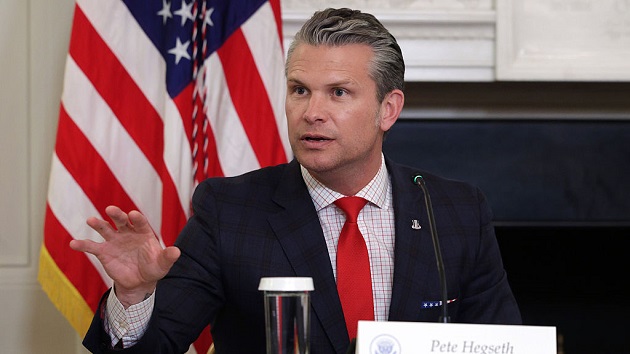How New York City is preparing for expected rising sea levels from climate change
Written by luck on March 11, 2022
(NEW YORK) — The rise in sea levels has been imminent as concerns over climate change grow, and with the latest predictions and extreme weather events, cities are rushing to create long-term solutions to external events — especially around floods in coastal areas.
Sea levels are expected to rise up to a foot by 2050, leading to a higher frequency of coastal flooding across the U.S., according to the latest National Oceanic and Atmospheric Administration report.
The report, published Feb. 15, projects the sea level rise by decade for the next century based on tide gauge and satellite observation. Each region could rise between 10-12 inches in the next 28 years, which could vary based on each region’s landscape.
By 2100, the risks double, with an estimated increase of 2 feet of sea level. The report states both projections could lead to a “profound increase in the frequency of coastal flooding, even in the absence of storms or heavy rainfall.”
“This report highlights the challenges posed by a warming planet. Climate change is causing sea levels to rise, ocean surface temperatures to moisture to build in the atmosphere and all of these factors, leading to more intense and destructive storms,” NOAA Administrator Rick Spinrad said. “This report is a wake-up call for the United States, but it’s a wake-up call for the silver lining. It provides us with the information needed to act now to best position ourselves for the future.”
Based on historical data, sea levels rose by one foot in the last century. The latest NOAA report reveals the same rate could impact coastal areas around the U.S. in less than three decades.
As a way to prevent flooding, New York City, in partnership with the federal government, is reconstructing parks and communities from East 25th Street to Montgomery Street as part of the East Side Coastal Resiliency Project.
“Through science-based analysis, policy and program development, and capacity building, the city’s resiliency efforts are ensuring that New York City is ready to withstand and emerge stronger from the multiple impacts of climate change, including from more frequent hurricanes, higher sea levels, extreme precipitation and more extreme temperatures,” a City Hall spokesperson told ABC News.
The $1.45 billion project, which began in fall 2020 and is set to be completed by 2025, will create a 2.4-mile “flood protection system” consisting of floodwalls and floodgates, as well as elevate parts of the region by up to 9 feet, to keep the storm surge out of the neighborhood.
Sewer infrastructure will also be remodeled and updated to handle more water in coming years. The project estimates more than 110,000 people will be impacted, of which about a quarter live in low-income or public housing.
“We have to address that existing risk and exposure that we already have. But we also can’t continue to build in the way that we have been,” NY-NJ Climate Resilient Coasts and Watersheds Director Kate Boicourt said. “There is no such thing as a natural disaster in the way that we have seen of this devastation of our built environment. And that’s because we’ve built this in places there in ways that are really risky.”
After Hurricane Sandy hit in 2012, with an estimate of $19 billion in damages across New York City, Boicourt said awareness about flooding and sea level rise increased, and the city began funding projects to address future threats.
The city was hit by the remnants of Hurricane Ida in September 2021, leading to massive floods and record-breaking rainfalls. The storm killed over 44 in the city alone, according to the NYC Community Development Block Grant Disaster Recovery.
Frank Avila-Goldman, a fourth-generation Lower East Side resident who lives in affordable housing on the waterfront, was at home when Hurricane Sandy made landfall. In the last 20 years, he told ABC News he has noticed the difference in extreme events that have hit the city.
“We’re always scared. You never know when this can turn into the next bigger storm,” Avila-Goldman said.
The project, however, has its own wave of controversies. To break ground, the city had to temporarily block 45 acres of public green space and cut down 1,000 mature trees, fueling some residents to organize protests and demand “true resiliency” to save the East River Park.
Across the fences blocking the construction site, “Save East River Park,” “Stop this ecocide” and “More Trees Please” signs read in protest of the project.
“I believe that people really care and I believe that people care about what happens to their neighborhood. And I believe that there is a place for advocating for how much the Lower East Side often gets shafted,” Avila-Goldman said. “But what we’re seeing right now is a welcome investment citywide and nationwide, and I hope that continues and it really needs to amp up.”
While the East Side Coastal Resiliency Project aims at protecting residents and surrounding communities from floods and sea level rise until 2100, the race against time continues to find long-term solutions for generations to come, before it’s too late.
“We’re seeing the investment understanding that climate change is real,” Avila-Goldman continued. “Climate change is here. It’s not turning back anytime soon, and we don’t figure out how to adapt and be resilient. We’re going to have much greater damage in the future.”
Copyright © 2022, ABC Audio. All rights reserved.





